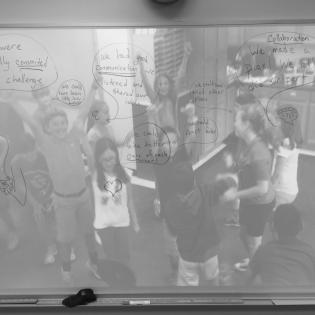The Parts of a Leader
To identify the qualities students see in effective leaders and create a life-size picture of a good leader emphasizing the body parts that represent those qualities.
Author: Urban EdVenture Faculty
Students will be good team members. They will understand what it means to lead and follow. They will identify the qualities of good leaders, helping themselves to imagine portraying these qualities.
Human-sized butcher block paper, markers, journals (or, alternately, computers or iPads with “phoetic,” “wordify” or a similar word image generator).
Create your own list of the qualities of a leader by reflecting on the leaders you have followed. Be prepared to share this personal story.
Leadership; integrity; honesty; perceptive; initiative; stewardship
Ask each student to write a personal commitment to themselves about the type of leader they wish to be. Give an example, “I will be a leader who listens to my team and acts fairly. I will do my part in every challenge to…”
Instructions
Share a personal story about a leader you admire, and how she or he inspired you to accomplish something. Emphasize the qualities of that leader which you feel are most important. It is helpful to illustrate that there can be a dichotomy – a good leader makes quick decisions when necessary, but takes the time to examine the options when possible.
Ask students to reflect on a leader they admire – a teacher, scout leader, parent, fellow student. Try to focus on leaders they have personal experience with (not distant people like the President of the United States).
Ask the question, “What makes the person that you’re thinking about a good leader?” Have students write their answer to this question in their journals.
Offer time for students to share these stories with a partner or in small groups. While sharing, the students should listen for common attributes.
As a class, create a list of the attributes the students generated.
Draw a life-size outline of a person on the butcher paper. You could have one student trace another.
Divide the students into small teams, representing the parts of the body: Arms, Legs, Chest, Ears, Eyes, Mouth, and Brain.
Each team will be responsible for adding their body part to the life-size leader image complete with captioning that explains how that body part represents specific qualities of a leader.
